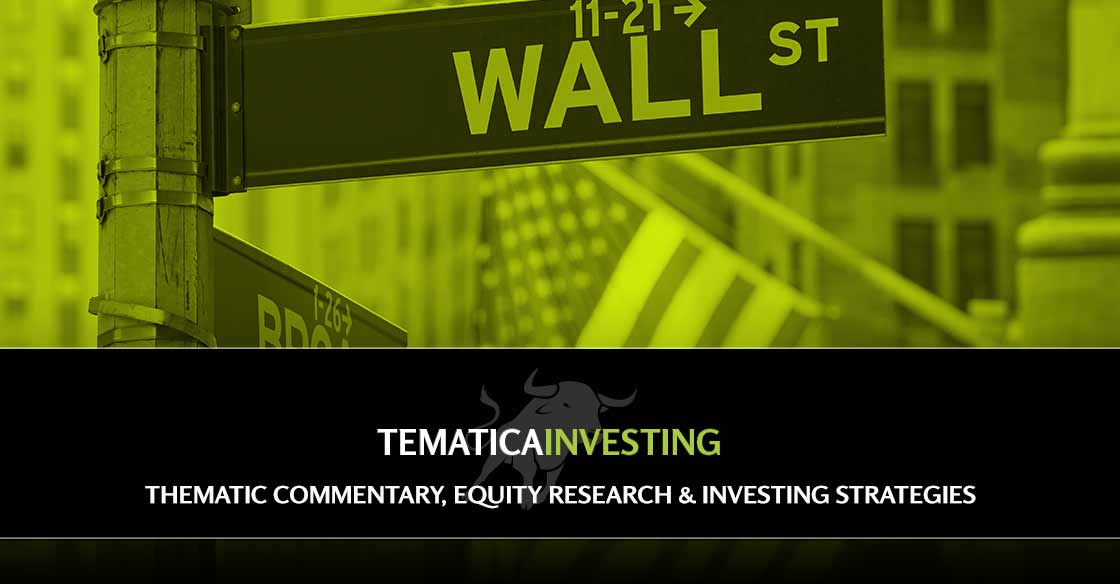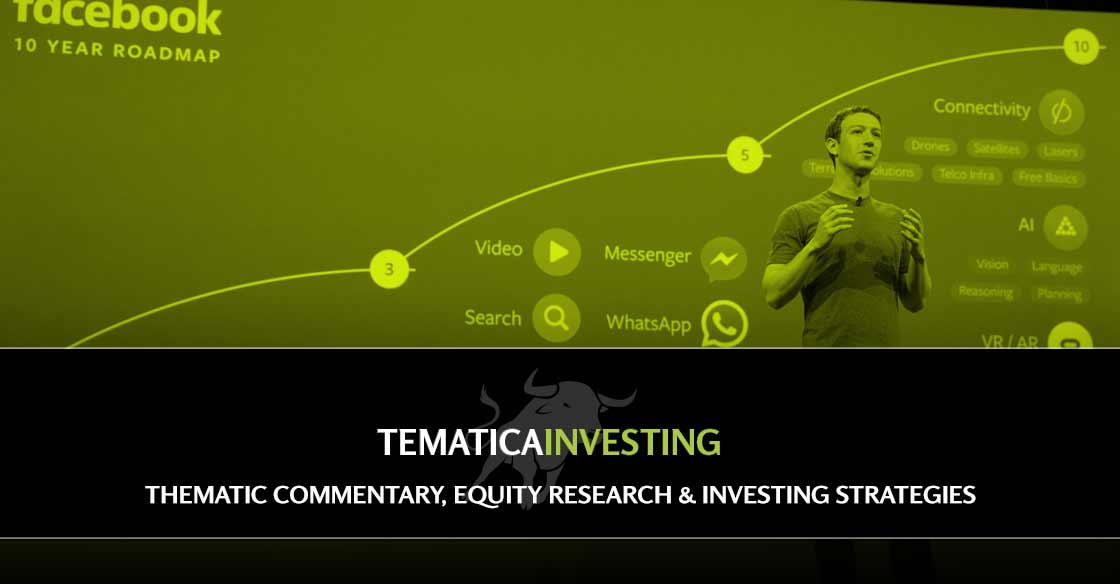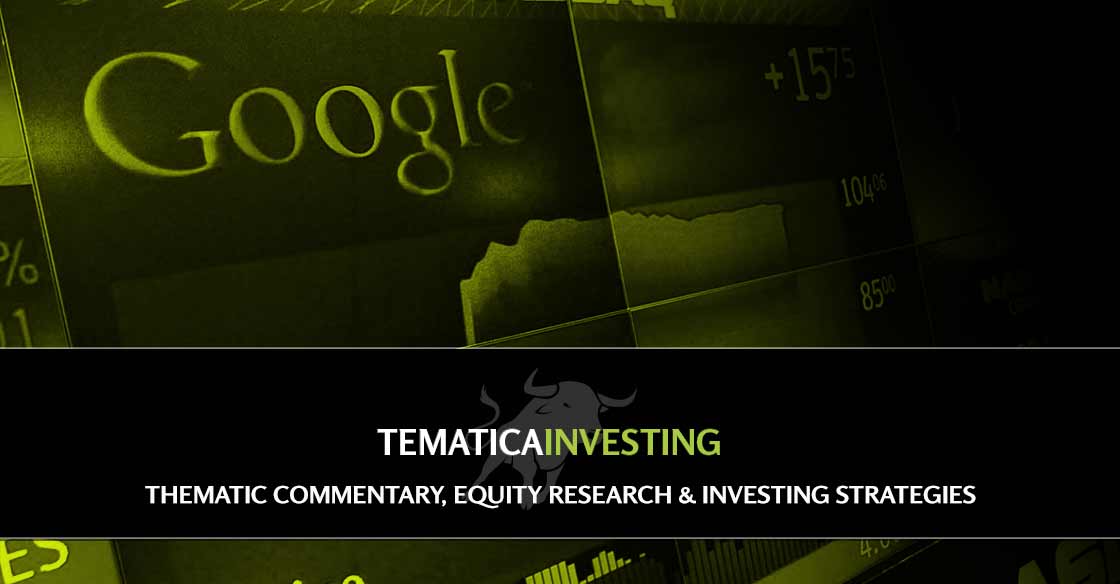WEEKLY ISSUE: Examining an Aging of the Population Contender as we wait for the Fed
Key Points from this Issue:
- We’ll continue to stick with Facebook shares, and our long-term price target remains $225.
- We continue to have a Buy rating and $1,300 price target on Alphabet (GOOGL) shares.
- Our price target on Amazon (AMZN) shares remains $1,750.
- We are adding shares of Aging of the Population company Brookdale Senior Living (BKD) to the Tematica Investing Contender List
The action has certainly heated up this week, with more talk of trade restraints with China, two more bombings in Austin, Texas and renewed personal data and privacy concerns thanks to Facebook. And that’s all before the Fed’s monetary policy concludes later today when we see how new Fed Chair Jerome Powell not only handles himself but answers questions pertaining to the Fed’s updated forecast and prospects for further monetary policy tightening. Amid this backdrop, we’ve seen the major US stock market indices trade off over the last week, but as I shared in this week’s Monday Morning Kickoff, what Powell says and how the market reacts will determine the next move in the market.
I continue to expect a 25bps interest rate hike with Powell offering a dovish viewpoint given the uncertainty emanating from Washington, the lack of inflation in the economy and the preponderance of weaker than expected data that has led to more GDP cuts for the current quarter than upward revisions. As of March 16, the Atlanta Fed’s GDP Now reading stood at 1.8% for 1Q 2017 vs. 5.4% on Feb. 1 – one would think Powell and the rest of the Fed heads are well aware of this.
We touched on these renewed personal data and privacy concerns earlier in the week, and the move lower in Facebook (FB) shares in response is far from surprising. As I wrote, however, I do expect Facebook to instill new safeguards and make other moves in a bid to restore user trust. At the heart of the matter, Facebook’s revenue model is reliant on advertising, which means being able to attract users and drive usage in order to serve up ads. As it is Facebook is wading into original content with its Watch tab and moves to add sporting events and news clearly signal there is more to come. I see it as part of a strategy to renews Facebook’s position as a sticky service with consumers and one that advertisers will turn to in order to reach consumers as Facebook focuses on “quality user engagement.”
The ripple effects of these renewed privacy concerns weighed on our Alphabet/Google (GOOGL) shares, which traded off some 4% over the last week, as well as other social media companies like Twitter (TWTR) and Snap (SNAP). The silver lining to all of this is these companies are likely to address these concerns, maturing in the process.
Not a bad thing in my opinion and this keeps Alphabet/Google shares on the Tematica Investing Select List, while the company’s prospect to monetize YouTube, mobile search, Google Express (shopping) and Google Assistant keep my $1,300 price target intact. Per a new report from Reuters, Google is working with large retailers such as Target Corp (TGT), Walmart (WMT), Home Depot (HD), Costco Wholesale (COST and Ulta Beauty (ULTA) to list their products directly on Google Search, Google Express, and Assistant. I see this as Alphabet getting serious with regard to Amazon (AMZN) as Amazon looks to grow its advertising revenue stream.
- We’ll continue to stick with Facebook shares, and our long-term price target remains $225.
- We continue to have a Buy rating and $1,300 price target on Alphabet (GOOGL) shares.
- Our price target on Amazon (AMZN) shares remains $1,750.
On the housekeeping front, earlier in the week, we shed Universal Display (OLED) shares, bringing a close to one of the more profitable recommendations we’ve had over the last year here at Tematica Investing. Now let’s take a look at a Brookdale Senior Living and our Aging of the Population investing theme.
Brookdale Senior Living – A well-positioned company, but is it enough?
One of the great things about thematic investing is there is no shortage of confirming data points to be had in and our daily lives. For example, with our Connected Society investing theme, we see more people getting more boxes delivered by United Parcel Service (UPS) from Amazon (AMZN) and a several trips to the mall, should you be so inclined, will reveal which retailers are struggling and which are thriving. If you do that you’re also likely to see more people eating at the mall than actually shopping; perhaps a good number of them are simply show rooming in advance of buying from Amazon or a branded apparel company like Nike (NKE) or another that is actively embracing the direct to consumer (D2C) business model.
While it may not be polite to say, the reality is if you look around you will notice the domestic population is greying More specifically, we as a people are living longer lives, which has a number of implications and ramifications that are a part of our Aging of the Population investing theme. There are certainly issues of having enough saved and invested to support us through our increasingly longer life spans, as well as the right healthcare to deal with any and all issues that one might face.
According to data published by the OECD in 2013, the U.S. expectancy was 78.7 years old with women living longer than men (81 years vs. 76 years). Cross-checking that with data from the Census Bureau that says the number of Americans ages 65 and older is projected to more than double from 46 million today to 75.5 million by 2030, according to the U.S. Census Bureau. Other data reveals the number of older American afflicted with and the 65-and-older age group’s share of the total population will rise to nearly 25% from 15%. According to United States Census data, individuals age 75 and older is projected to be the fastest growing age cohort over the next twenty years.
As people age, especially past the age of 75, it becomes challenging for individuals to care for themselves, and this is something I am encountering with my dad who turns 86 on Friday. Now let’s consider that roughly 6 million Americans will have Alzheimer’s by 2020, up from 4.7 million in 2010, and heading to 8.4 million by 2030 according to the National Institute of Health. Not an easy subject, but as investors, we are to remain somewhat cold-blooded if we are going to sniff out opportunities.
What all of this means is we are likely to see a groundswell in demand over the coming years for assisted living facilities to house and care for the aging domestic population.
One company that is positioned to benefit from this tailwind is Brookdale Senior Living (BKD), which is one of the largest players in the “Independent Living, Assisted Living and Memory Care” market with over 1,000 communities in 46 states. The company’s revenue stream is broken down into fives segments:
- Retirement Centers (14% of 2017 revenue; 22% of 2017 operating profit) – are primarily designed for middle to upper income seniors generally age 75 and older who desire an upscale residential environment providing the highest quality of service.
- Assisted Living (47%; 60%) – offer housing and 24-hour assistance with activities of daily living to mid-acuity frail and elderly residents.
- Continuing care retirement centers (10%; 8%) – are large communities that offer a variety of living arrangements and services to accommodate all levels of physical ability and health.
- Brookdale Ancillary Services (9%; 4%) – provides home health, hospice and outpatient therapy services, as well as education and wellness programs
- Management Services (20%; 6%) – various communities that are either owned by third parties.
In looking at the above breakdown, we see the core business to focus on is Assisted Living as it generated the bulk of the company’s operating profit stream. This, of course, cements the company’s position in Tematica’s Aging of the Population theme, but is it a Contender or one for the Tematica Investing Select List?
Changes afoot at Brookdale
During 2016 and 2017, both revenue and operating profit at Brookdale came under pressure given a variety of factors that included a more competitive industry landscape during which time Brookdale had an elevated number of new facility openings, which is expected to weigh on the company’s results throughout 2018. Also impacting profitability has been the growing number of state and local regulations for the assisted living sector as well as increasing employment costs.
With those stones on its back, throughout 2017, Brookdale surprised to the downside when reporting quarterly results, which led it to report an annual EPS loss of $3.41 per share for the year. As one might imagine this weighed heavily on the share price, which fell to a low near $6.85 in late February from a high near $19.50 roughly 23 months ago.
During this move lower in the share price, Brookdale the company was evaluating its strategic alternatives, which we all know means it was putting itself up on the block to be sold. On Feb. 22 of this year, the company rejected an all-cash $9 offer as the Board believed there was a greater value to be had for shareholders by running the company. Alongside that decision, there was a clearing of the management deck with the existing President & CEO as well as EVP and Chief Administrative Officer leaving, and CFO Cindy Baier being elevated to President and CEO from the CFO slot.
Usually, when we see a changing of the deck chairs like this it likely means there will be more pain ahead before the underlying ship begins to change directions. To some extent, this is already reflected in 2018 expectations calling for falling revenue and continued bottomline losses. Here’s the thing – those expectations were last updated about a month ago, which means the new management team hasn’t offered its own updated outlook. If the changing of the deck history holds, it likely means offering a guidance reset that includes just about everything short of the kitchen sink.
On top of it all, Brookdale has roughly $1.1 billion in long-term debt, capital and leasing obligations coming due this year. At the end of 2017, the company had no borrowings outstanding on its $400 million credit facility and $514 million in cash on its balance sheet. It would be shocking for the company to address its debt and lease obligations by wiping out its cash, which probably means the company will have to either refinance its debt, raise equity to repay the debt or a combination of the two. This could prove to be one of those overhangs that keeps a company’s shares under pressure until addressed. I’d point out that usually, transaction terms in situations like this are less than friendly.
While I like the drivers of the underlying business, my recommendation is we sit on the sidelines with Brookdale until it addresses this balance sheet concern and begins to emerge from its new facility opening drag and digestion. Odds are we’ll be able to pick the shares up at lower levels. This has me putting BKD shares on the Tematica Investing Contender List and we’ll revisit them in the coming months.










